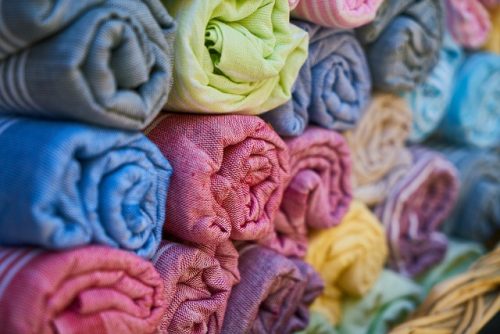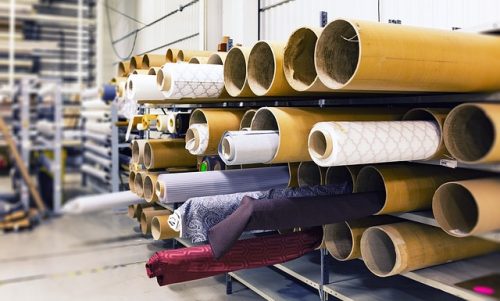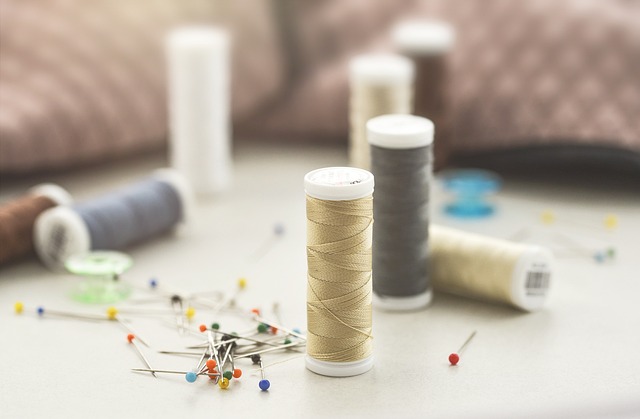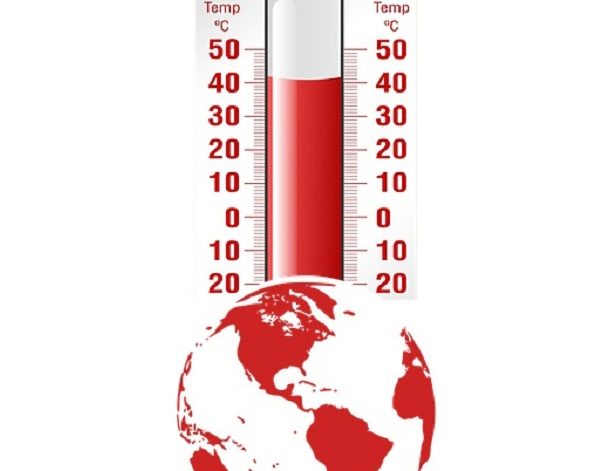Introduction: What is Textile Industry?
Textile refers to the production and manufacturing of yarn fiber, fabric and clothing used for the purpose of making and designing clothes used by the various industries including fast fashion as well as various other sectors like engineering for road reinforcements, insulation material etc.

What are the Impacts of Textile Industry?
- Water Pollution: The global textile industry uses 93 billion cubic metre of water i.e., 4 percent of all freshwater extraction daily. They are used for washing the fiber, bleaching, dyeing and then cleaning the finished product. Chemicals and other solvents used during the above processes are synthetic. They are not readily biodegradable. Most of the time that wastewater is discharged into water bodies without appropriate treatment so the BOD (Biological Oxygen Demand) value of water bodies is increased which disturbs the aquatic ecosystem.
- Air Pollution: Solvent vapors such as ammonia and formaldehyde are normally released in the atmosphere from many textile industries. In addition, carbon dioxide, a powerful greenhouse gas is released into the atmosphere in significant quantities. Additionally, cotton used for textiles, release cotton dust into the air which can be a health hazard. It can cause acute respiratory diseases and the air emissions cause damage to flora and fauna. Furthermore, air pollution contributes to global warming and global climate change.
- Noise Pollution: Excessive noise has threatened the life of workers and the residential areas around them from textile manufacturing. High noise level from machinery and workers working long hours without breaks causes psychological effects and physical damage, including irritability, loss of concentration, anxiety, hearing problems and increased pulse rate.
Read: All You Need To Know About Carbon Footprint And Its Importance.
Common Methods Of Waste Treatment Used In Textile Industry and Why they are not as Efficient:
Land Fills: which releases toxic leachate that contaminates groundwater resources as well as nearby plants and vegetation since the toxins can be up taken by plants. Moreover, landfills also release methane gas which is four times more powerful a greenhouse gas than CO2. ammonia is released from fabric which can leach and be toxic for both aquatic and terrestrial habitats. It also increases nitrogen content in drinking water which leads to adverse effects.
Incineration: It is a process of burning the textile solid waste. Incinerator chimneys emit organic substances such as dioxins, heavy metals, acidic gases and dust particles, which are all harmful to both humans and the environment. Also, there is a problem disposing of residual ash which is likely to contain a concentration of toxic material.
Related: 10 Ways to Eradicate Solid Waste- Methods of Reducing Solid Waste
Innovative Alternatives for Textile Waste Management:
- Source Reduction: Using raw material in a way that leaves little or even zero waste. It is the first step that should be considered in an integrated waste management system. This can be done by Recycling.
- Recycling: Recycling is to use waste materials into new or reusable products. 99% of used textiles are recyclable. Recycling synthetic textile materials can help prevent damage to the planet. The least expensive and harmful way is when a substance can be recycled into its original product, i.e. ‘closed loop’ recycling. Essentially, recycling is of 3 types: primary secondary and tertiary. Primary involves recycling a product into its original form; secondary recycling involves turning a product into a new product used for different purposes. Tertiary recycling involves converting the fabric waste into an altogether different material with different properties via hydrolysis and pyrolysis.
- Microfiber Reducing Waste water treatment: As textile production utilizes a lot of water intensive processes from the basic source of cotton, wool and other raw materials that need approximately 40000 liters of water/day. So this water usage along with processes like dying, bleaching and washing give rise to surplus amounts of waste water that is difficult and harmful to dispose. Microfiber reducing washing machines are being used to reduce the amount of textile or fiber shedding from clothes before the final packaging stage.
- Alternative Source Utilization: Using Bamboo instead of Cotton for raw material: since cotton requires 10,000 liters per day and takes about 4 months and so instead of that we can use alternatives like Bamboo that not only grows 1.5 inch/hour but also initially only needs 8-12 inches of water a week. They also grow in diverse climates making it very sustainable and versatile.
- Regeneration and Up cycling: In regeneration, the fiber is regenerated from leftover cloth that is defective or damaged after being treated with chemicals at high temperatures and pressure which is then spun into a thread. This creates fabrics with long-lasting qualities. Cleansing cloth, old yarns untwisted and spun into new yarn varieties, quilts, and car seat padding can all be made from reclaimed/recycled fibers.

- Composting: This method can be used to process both natural and regenerated fiber. PLA (Poly Lactic Acid) biodegradable polymers are an innovative way that will allow disposal of fabric in landfills as they are capable of degrading completely. Polylactic acid is a polymer extracted from corn. It has antimicrobial properties as well that allow it to be used in medicinal textiles. Currently, Various studies are underway to convert these chemical-free, post-industrial waste into composts and apply it to plants as bio-manure.
Also Check Out: Makeup Industry and Its Negative Impacts on the Environment
Conclusion
As harmful as the textile industry practices are, there is no functioning of humanity without it. However, since over 90% of fabric can be regenerated or reused in some way it is our responsibility to consider its impact on a global scale and adopt sustainable practices to mitigate its effects and protect the planet.
Also Check Out,
Fast Fashion and Its Impacts On The Environment
Fashion Industry and its Negative Impact on the Environment
We hope you all liked this post! Please comment below if you have any suggestions, comments, or feedback! We at #envpk love hearing from our readers! Thanks!




